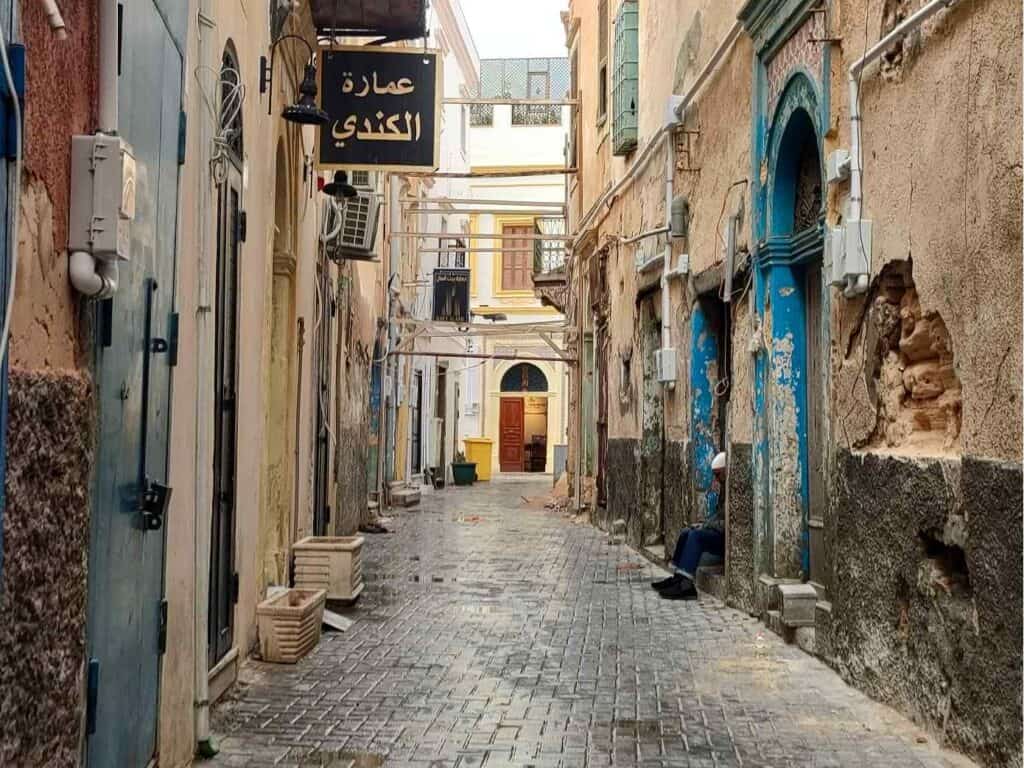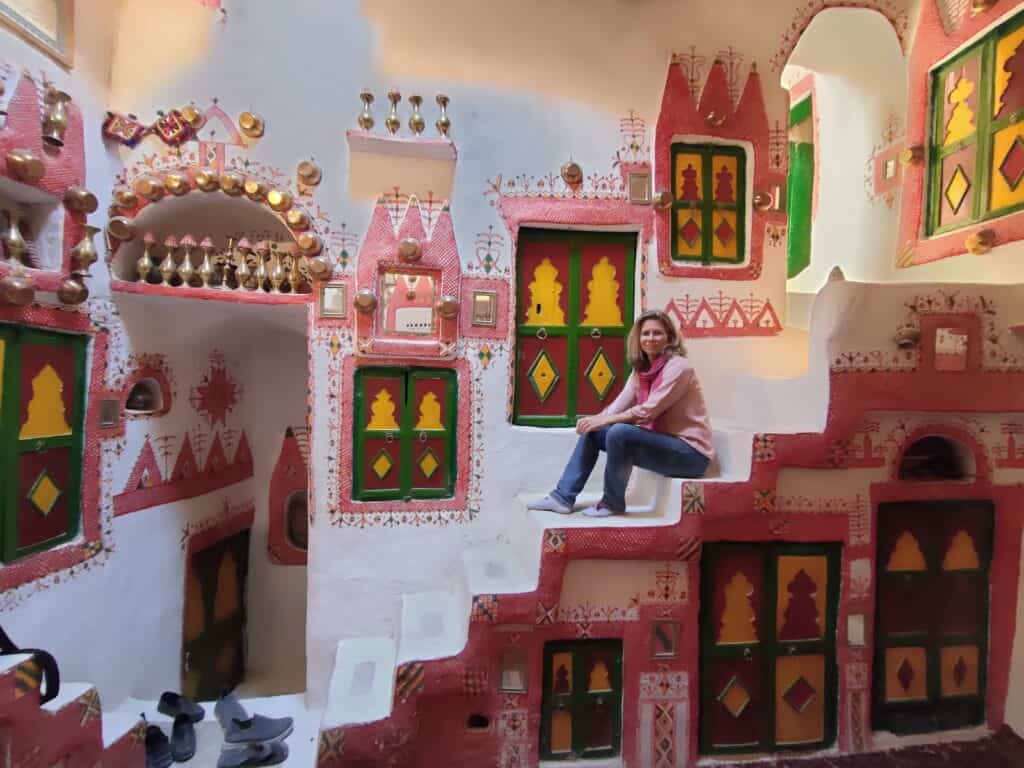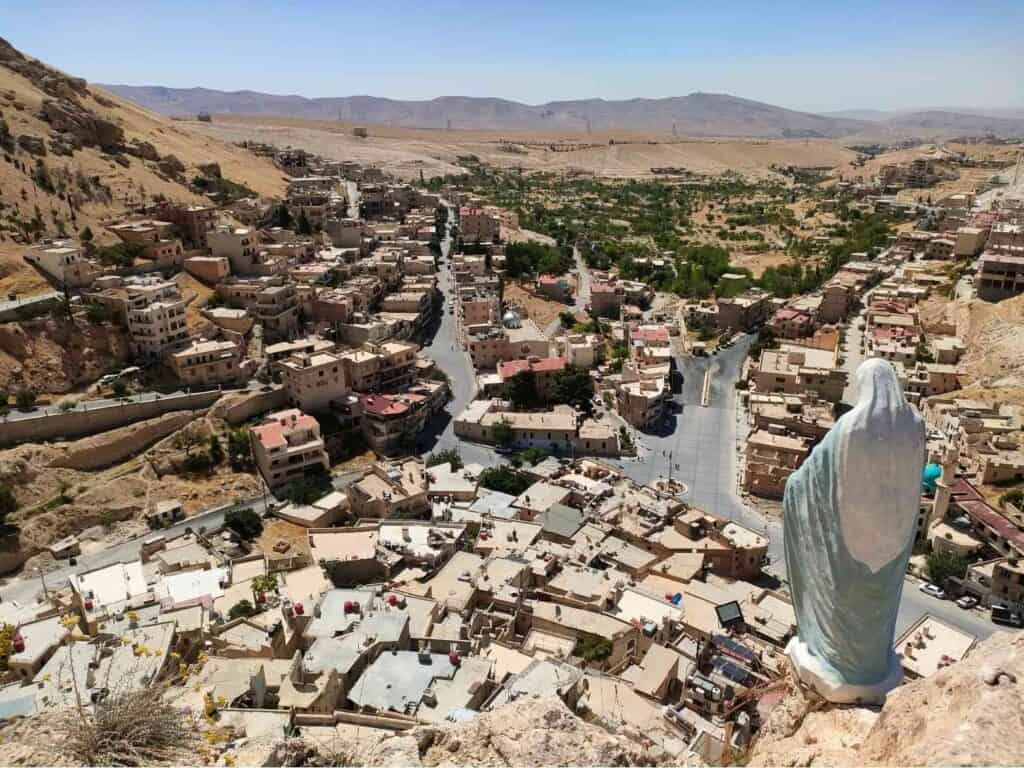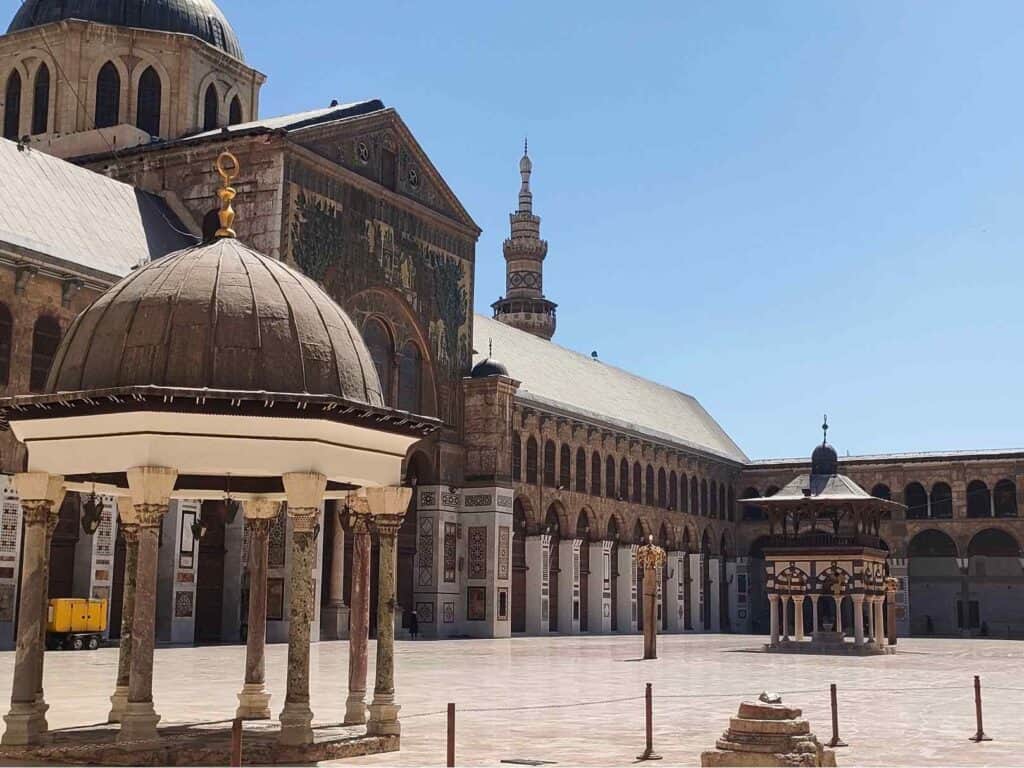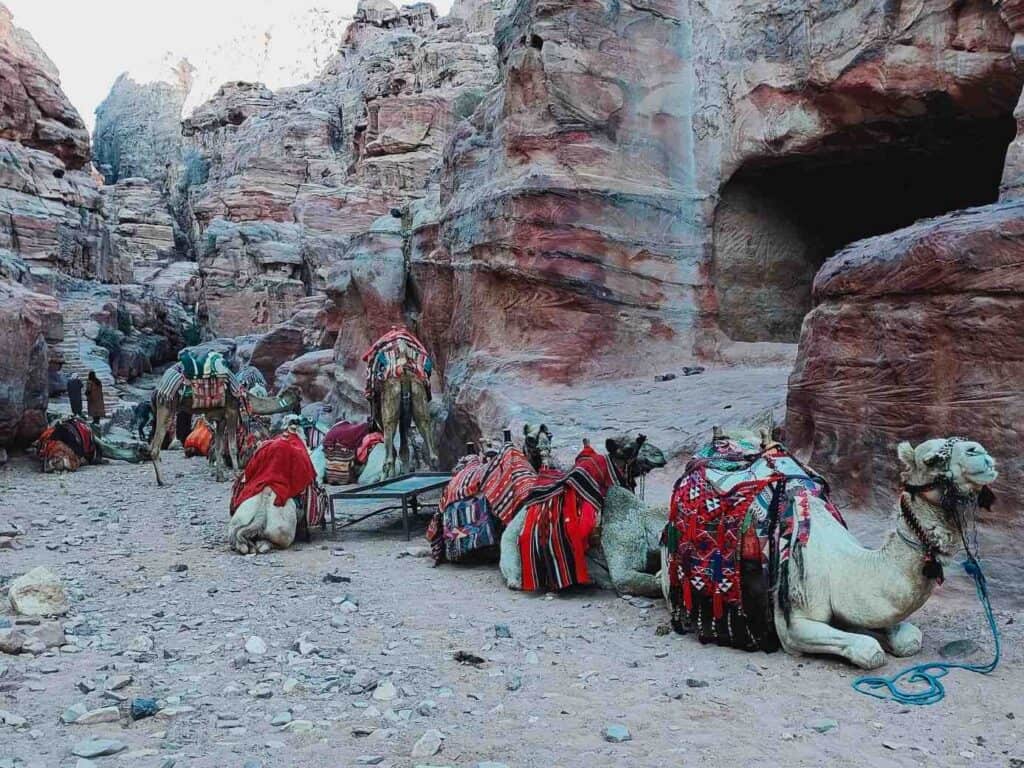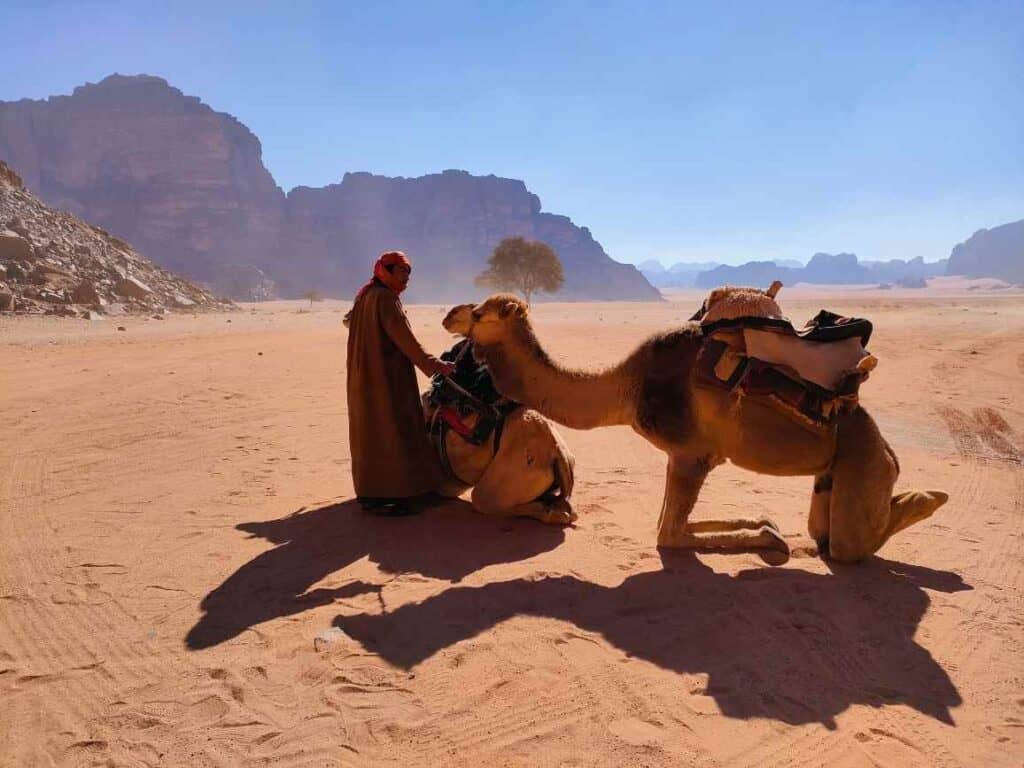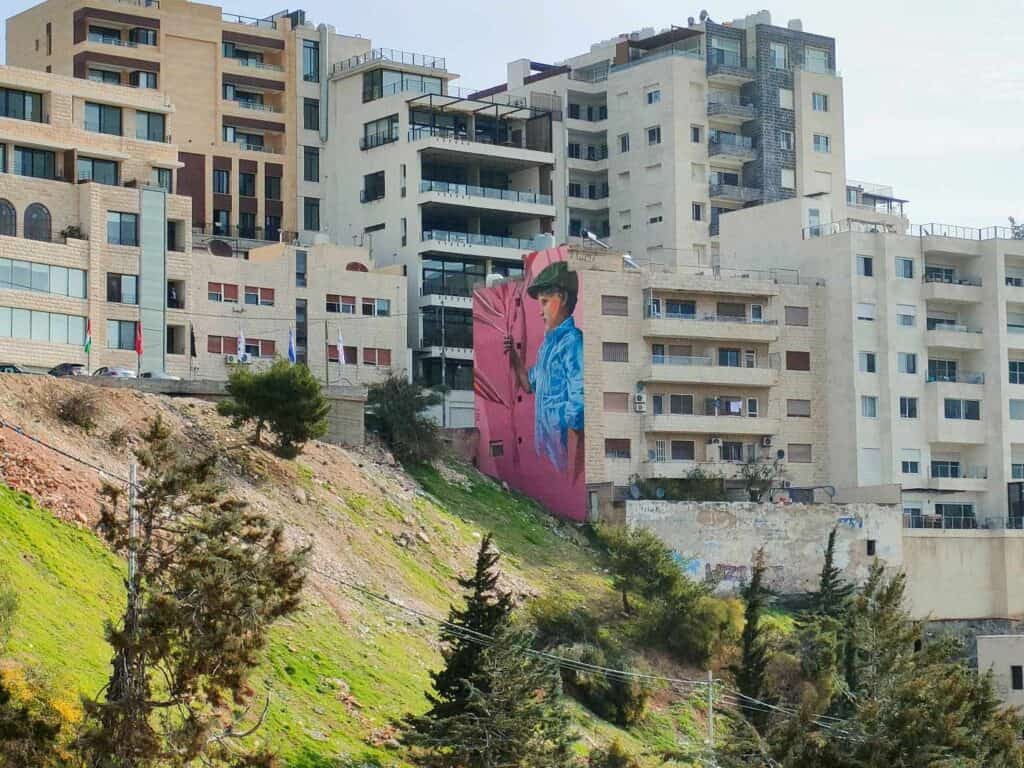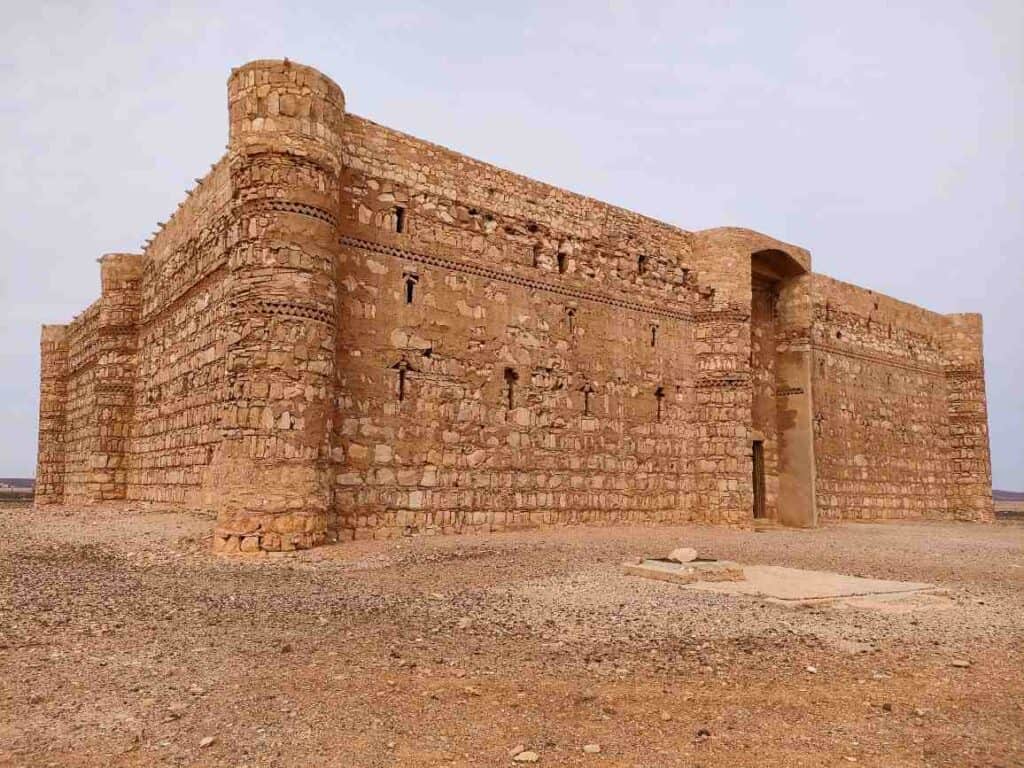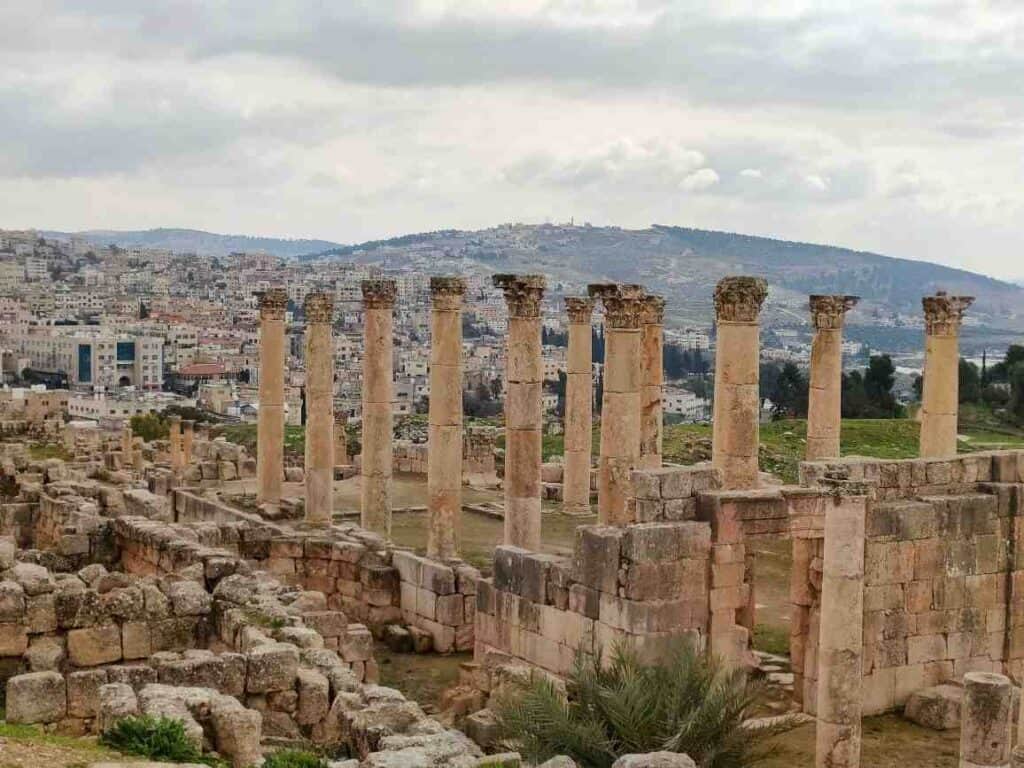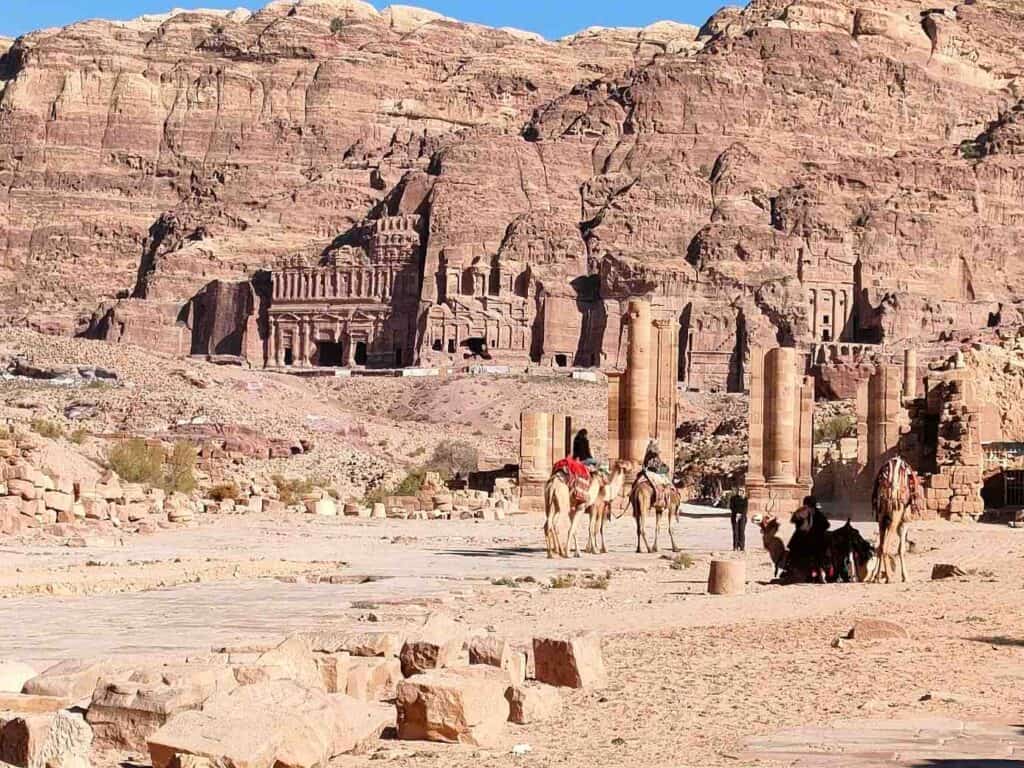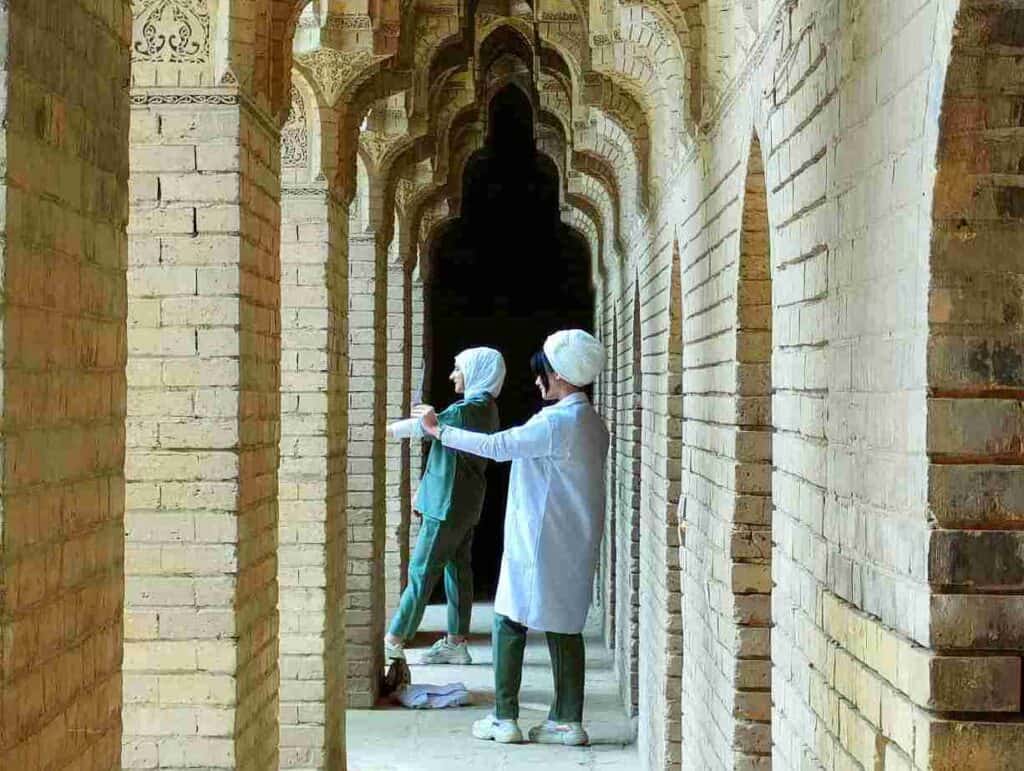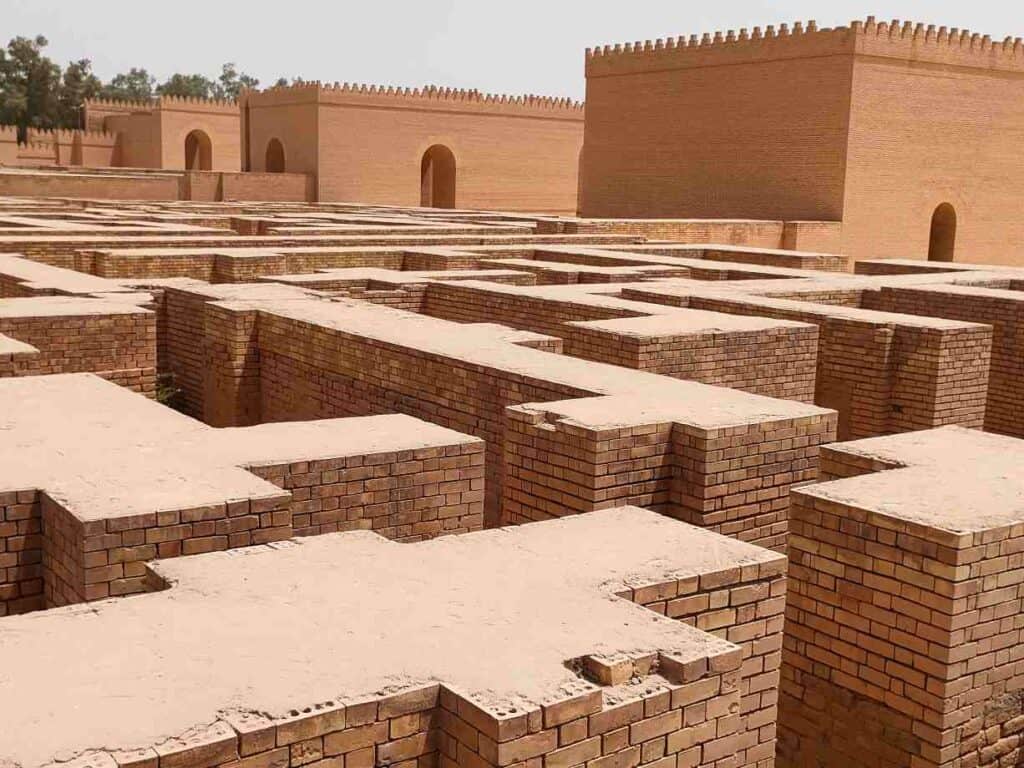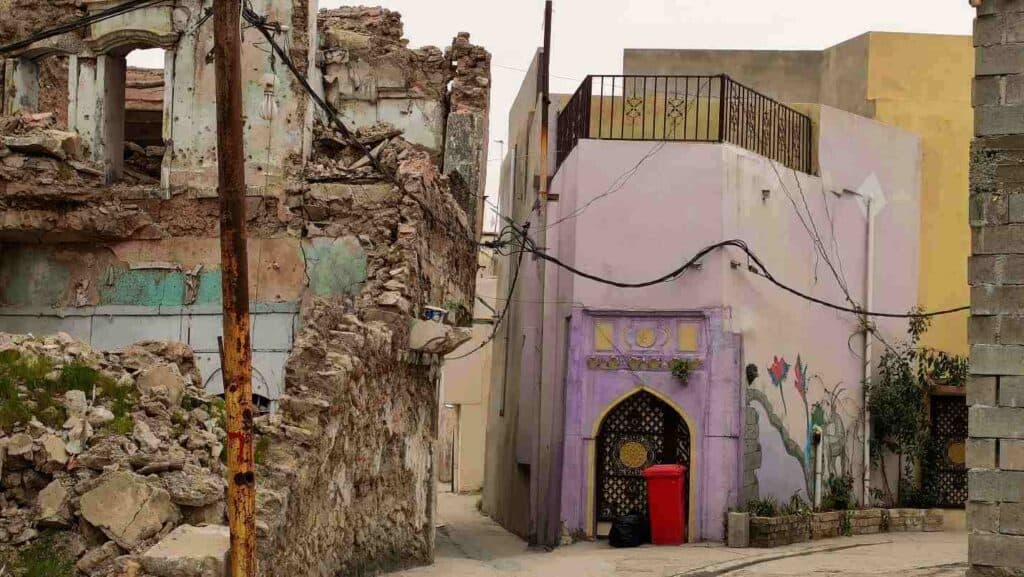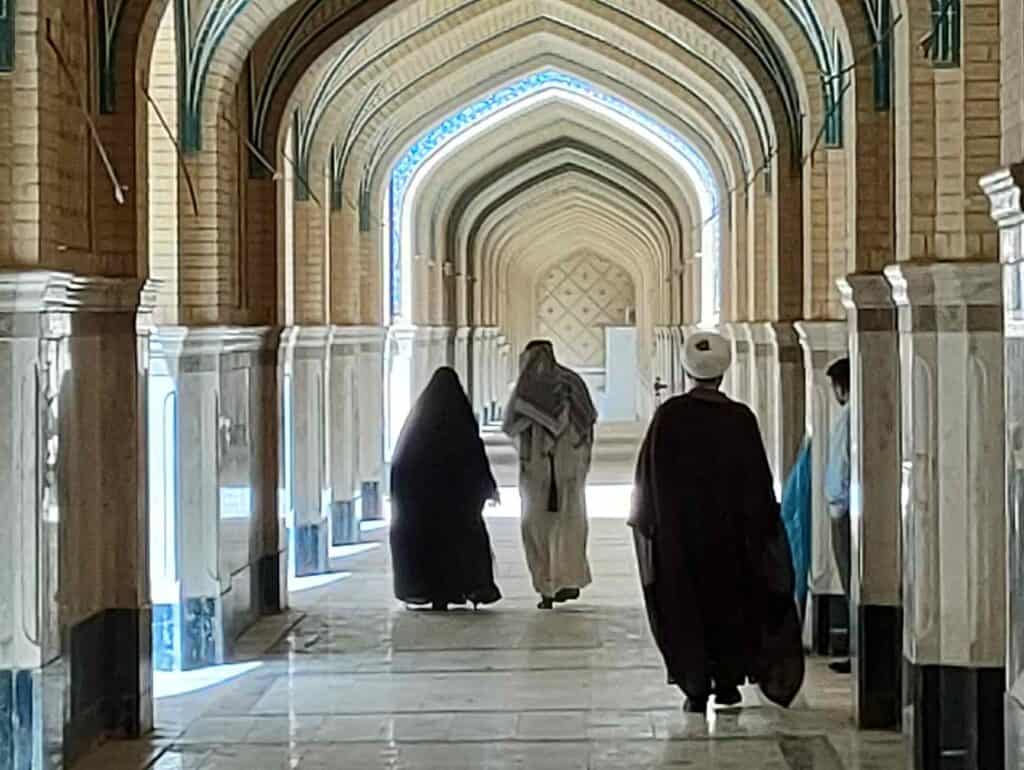For most people, Libya is a mystery. It is an Arab country, but not like the others. It is an African country, but they do not regard themselves as such, and Libya was only proclaimed independent in 1952. Before that, there were three separate regions – Tripolitania in the west, Cyrenaica in the east, and Fezzan in the south. In this huge country, larger than Egypt, 97% of the population is of Arab and Berber ethnicity, predominantly Sunni and speaking Arabic. However, its population is only 6 million. Thanks to the Italian colonial past, the Italian presence is still felt today, so you may eat one of the best pizzas and pasta of your life here and drink espresso coffee in a stylish Italian cafe. Italians modernized the country, but it also was a period of suffering for locals. The discovery of oil in the 1950s changed Libya forever, making it one of the world’s largest oil producers. For more than four decades, Libya was identified with a single man, Muammar Gaddafi, who had been in power for 42 years. But as in Iraq, his removal did not bring peace. Instead, the country fell into chaos, and since then, Libya has been identified as war and the embarking point of immigrants heading to Europe. However, Libya is actually home to some of the most spectacular Greek and Roman ruins in the world, and here stands Leptis Magna, once the second largest city in the Roman Empire, the Sabratha theatre, considered by many to be the most impressive Roman monument in North Africa or Ghadames, one of the oldest and most important cities in the Sahara, or Cyrene, that played an important role in the Hellenistic world. All in all, Libya has five World Heritage sites! Libya was an absolute surprise, and it has a huge potential as a tourist destination once the political situation becomes stable.
The best places to visit in Libya
- Sim card
- Money
- Is Libya safe to visit in 2025?
- Is Libya cheap?
- How to get a visa to Libya in 2025?
- How to visit Libya?
- How to travel to Libya
- What can you visit in Libya in 2024?
- What is the best time to visit Libya
- Accommodation
- Libyan food
- How to dress in Libya?
- Women and men
- Alcohol
- Smoking
- What you should not do in Libya
- Photography
- Geography
- Regions of Libya
- The Libyan Flag
- Language
- Religion
- Ethnicity
- Short History
- Further reading
Sim card
Libyana and Almadar are the two main service providers. I used Almadar and had coverage even in the desert. You can easily buy a local SIM card at the airport upon arrival or in one of their official shops in Tripoli. You can get 20 GB of internet for only 35 LD (~6 USD).
Money
Libyan dinar (LYD), 1 EUR~6 LYD.
Take cash with you, as credit cards are not accepted. People gather in crowds to change money behind the Red Castle. Don’t, however, change with them; there are official exchange offices nearby that offer a similar rate.
While ATMs are available in major cities, many do not accept foreign cards, and those that do may have limited cash reserves. It’s better to carry enough local currency for your day-to-day needs.
Is Libya safe to visit in 2025?
Libya has experienced significant political turmoil since the 2011 uprising that ended Gaddafi’s 42-year rule. The country has been divided between rival factions, resulting in ongoing conflicts that affect many aspects of life, including governance and economic stability. In recent years, international efforts have been made to broker peace and form a unified government. The situation is gradually improving, but travelers are advised to stay informed about current events, and most probably, the Foreign Ministry of your country advises against travel to Libya.
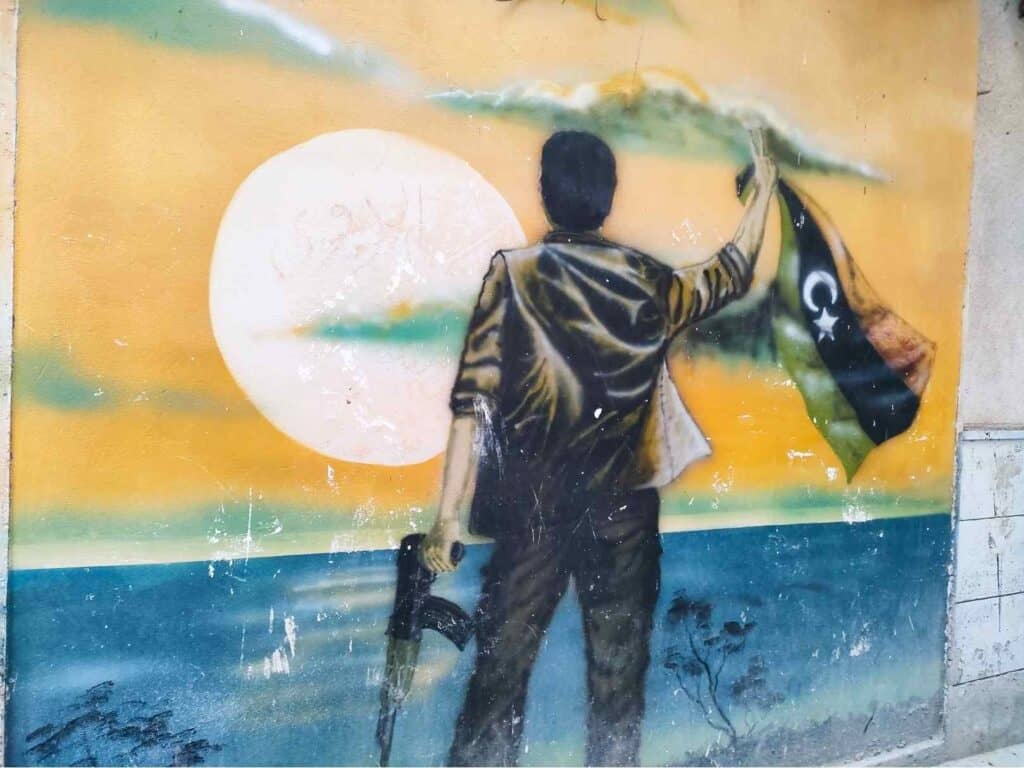
Is Libya cheap?
Libya is a surprisingly affordable travel destination; however, as you are required to book your entire tour with a local company with all the restrictions (for example, a tourist policeman must be with you all the time and stay in the same hotel), it is not cheap to travel to Libya at the moment. Plus, if you want to go to the Eastern part, you must pay a tax of ~500 EUR/USD just to enter.
However, once you are there, you will find that food and souvenirs are quite cheap, you don’t have to think too much about whether you should buy something.
Example of prices:
A main meal: ~ 8 USD
Mid-range accommodation: ~ 70 USD
Entrance fees: 1-2 USD
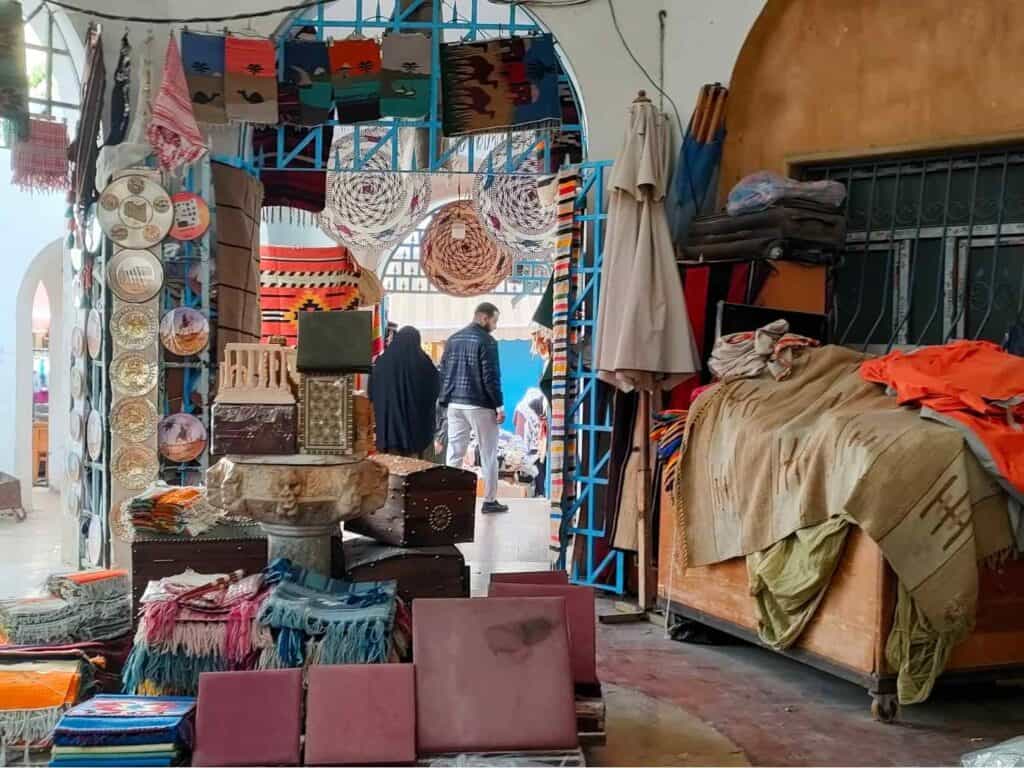
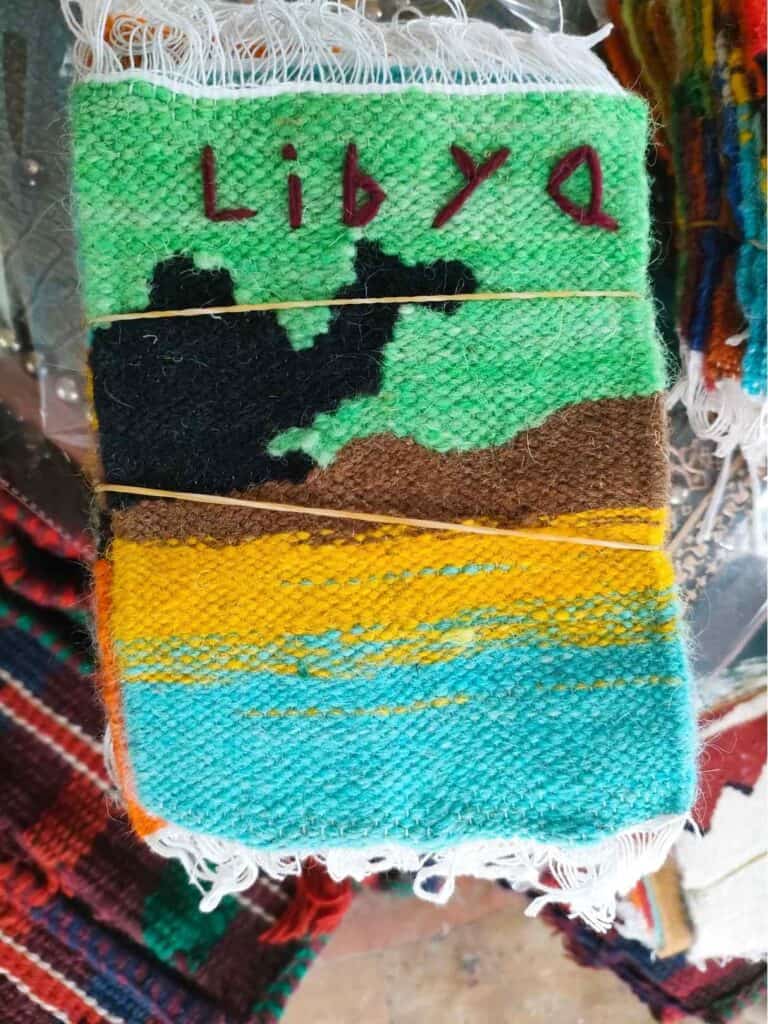
How to get a visa to Libya in 2025?
E-visa has recently been introduced by the Libyan government, making it much easier to travel to the country. Previously, only business visas were issued. Once you filled the visa form with the basic data and pay the visa fee of 60 USD, it takes 7-10 working days to get approval via email. You can check the status of your visa by logging in.
You get your approved visa as a PDF document that you can download; however, have a hard copy with you as well.
Your e-visa is valid for 3 months from the date of issue; the exact day of expiry of your visa is indicated on the visa form.
How to visit Libya?
At the moment you can only visit Libya on an organized tour. Wadi Smalos and Sherwes Travel are two local agents who organize tours to Libya. They can help with the visa procedure, book the flight ticket to Libya, and arrange the permits necessary to visit each site in the program. In addition, all travelers must have a tourist policeman with them throughout the trip. Earlier, this was only required for groups but not for individual travelers, but it may change in the future.
How to travel to Libya
Libyan, Berniq and Afriqiyah Airlines are the biggest airlines operating international and domestic routes. Berniq Airways’ international flights usually connect Tripoli/Benghazi with Alexandria, Cairo, Jeddah, Dubai, Istanbul, and Tunis. Afriqiyah Airways offers flights primarily to Tunisia (Tunis, Sfax), Egypt (Cairo, Alexandria), Turkey (Istanbul), Jordan (Amman) regional African and Middle Eastern cities.
Among international airlines, Turkish Airlines, EgyptAir, and Tunisair offer flights to Libya, mostly from major hubs like Istanbul, Cairo, and Tunis. Air Universal operates flights between Tripoli and Malta. Italian Airways has direct flights between Rome and Tripoli.
What you should know before traveling to Tunisia + itinerary
Arriving in Tripoli: The Tripoli International Airport (TIP) was severely damaged in 2018 during the civil war and is now under renovation. All domestic and international flights currently land at the former military Mitiga airport. It was initially an Italian airbase, then the Americans leased it from the Libyan monarchy, named it Wheelus Air Base, and transformed it into the largest American overseas base in the world, a “Little America”. Tripoli’s main international airport is expected to reopen in the first months 2025.
Arriving in Benghazi: Benina International Airport (BEN) in Benghazi is the primary international hub of East Libya.
Domestic air travel between major cities such as Tripoli, Benghazi, Misrata, Sabha, and Tobruk is available. Libyan Airlines and Afriqiyah Airways offer domestic routes critical for traveling across the country, mainly since road transport infrastructure can be limited.
What can you visit in Libya in 2024?
Most travelers visit the western part of the country, starting from the capital, Tripoli, and only a few include Eastern Libya in their itinerary. It is not because it is unsafe, but because of the high tax to be paid when entering Eastern Libya upon arrival (~500 USD), regardless of the days spent there. It may change in the future, in which case it is definitely worth visiting the Eastern part as well with the stunning Jebel Akhdar (Green Mountains) and the archeological site of Cyrene, once an important Greek colony, a UNESCO World Heritage Site.
What is the best time to visit Libya
Libya has a mix of desert and Mediterranean climate. 90% of the country is covered by desert, while the coastal strip is green and fertile. This is where most people live. In the desert, summers are hot, while winter can be cold. Therefore, If you want to visit both the coastal strip and the desert, spring (March-May) and autumn (September-November) are the best times to visit. Hot, dry wind during spring and autumn also affects the Sahara.
In the coastal region, summers are equally hot, but winters are relatively mild, so the best time to visit it is from September to May. Be prepared that during winters, rain is common along the coast.
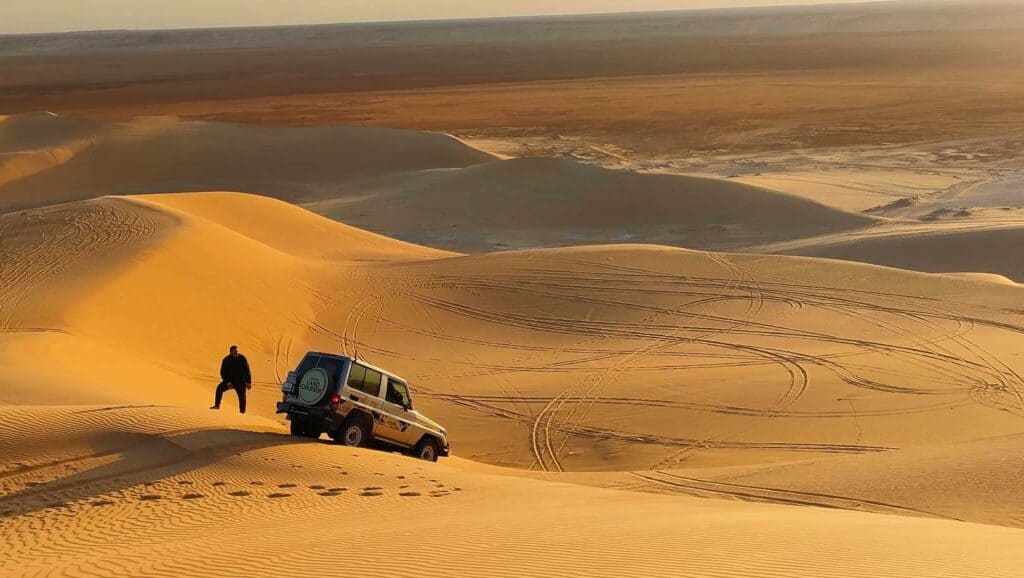
Libyans are usually conservative and observe Ramadan, meaning restaurants are closed during the day. For a non-Muslim, it is better to avoid this time of the year to visit Libya.
Festivals and cultural events are usually a good time to visit a country. The Ghadames Festival, for example, is a well-known event that celebrates the culture of the desert city of Ghadames, with traditional music, dance, and handicrafts. It usually takes place in November. However, they want to avoid crowds and thus insecurity, so it is for locals at the moment.
The biggest celebration takes place on 17th February, the day of the Revolution, which marks the beginning of the Libyan Civil War that eventually led to the overthrow of Muammar Gaddafi’s government. During this time, people go to the streets, and Tripoli and other cities become very lively.
Accommodation
There is a range of hotels available in Tripoli. As it is only possible to visit Libya on an organized tour, I stayed at the hotel (Hotel Cleopatra 4*) chosen by the local company. There should be an option to stay in a lower-budget or luxury hotel. There are a few hotels in Ghadames as well.
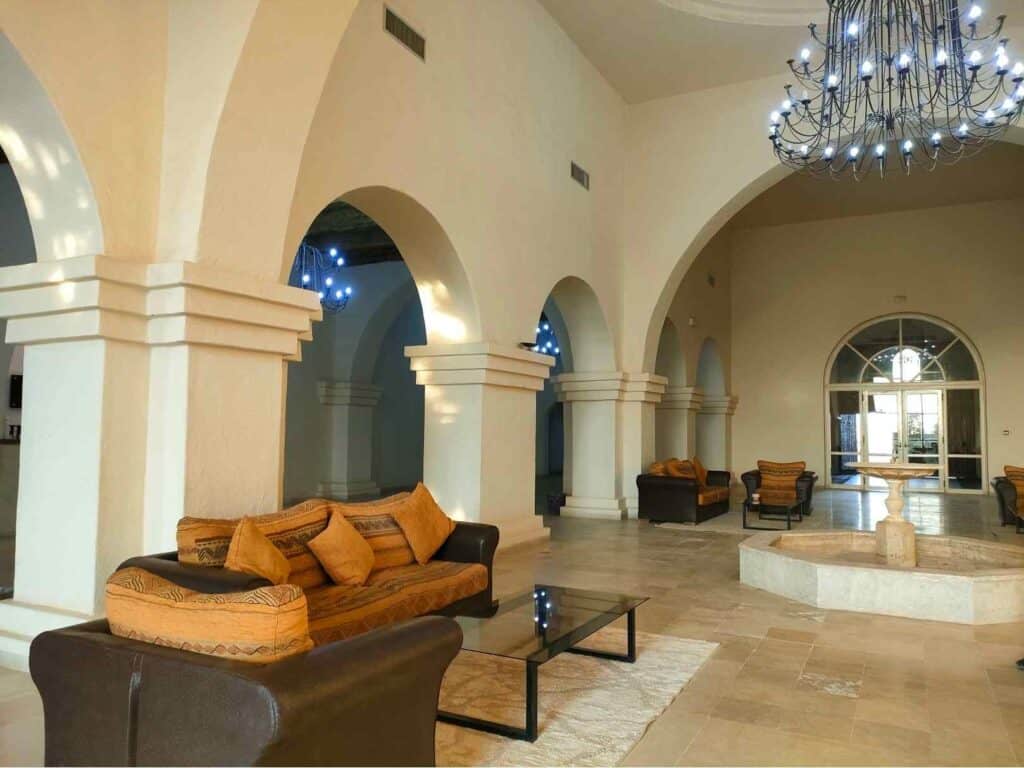
Libyan food
Libyan food is a blend of Mediterranean, Middle Eastern, and North African cuisine. The most traditional Libyan food is couscous with fish or meat or “shakshuka”, a dish of poached eggs cooked in a spicy tomato sauce, served with fresh bread. Harissa, a fiery chili paste, is often added to meals, or you ask for that if you like spicy food.
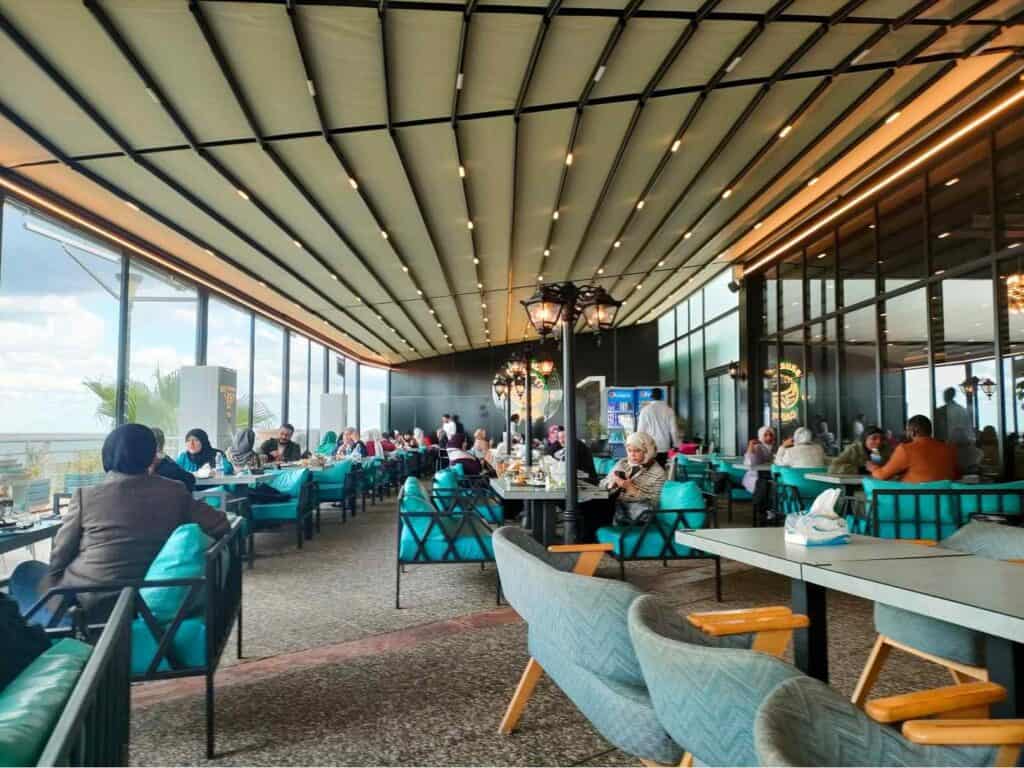
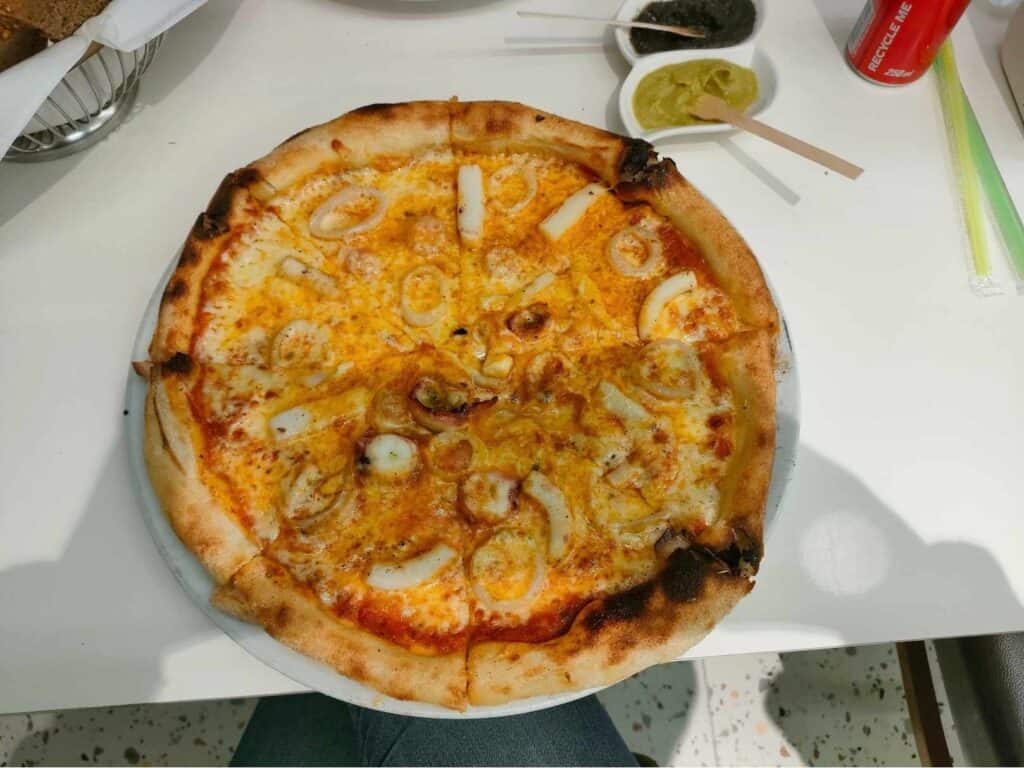
Libyan people’s main meal is lunch. Therefore, most of the Libyan restaurants are open from 12:00 – 15:00 or until they don’t run out of food. There are generally few restaurants that serve traditional local meals and even fewer that are open in the evening during dinner time as it is not their main meal. However, you will find Lebanese, Turkish, and several Italian restaurants open during lunch and dinner time as well.
How to dress in Libya?
Libya is a more conservative Muslim country, so you should dress modestly. Men should generally wear long trousers and shirts that cover their shoulders. Western clothing is ordinary in cities, but people often wear traditional clothes in rural areas like the desert oasis Ghadames or the south. Shorts are generally considered inappropriate for men, except at the beach or in informal settings.
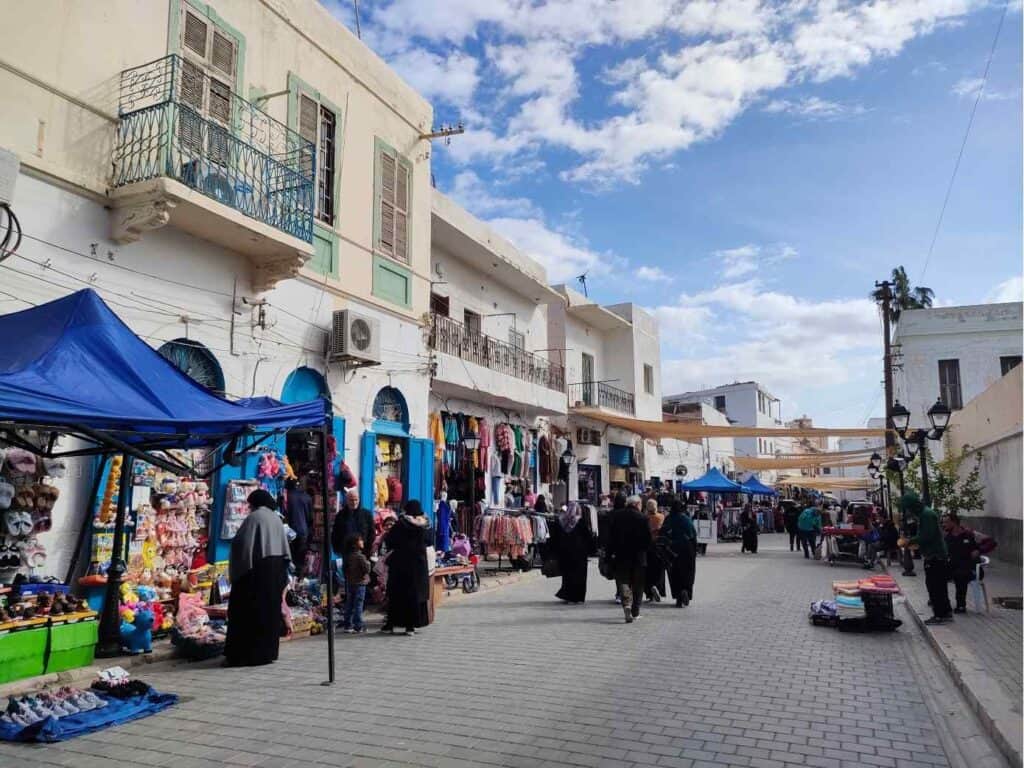
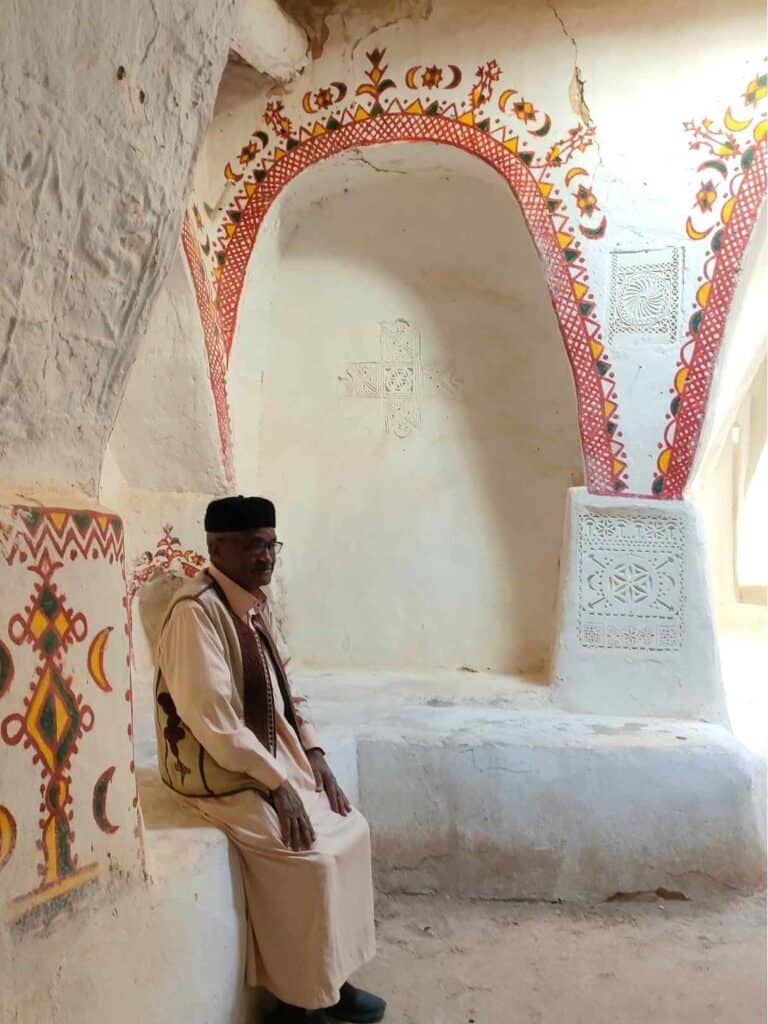
Women should cover their arms and legs. Although not compulsory, almost all Libyan women wear a headscarf, which is not expected from a foreigner. They are aware that you come from a different culture.
However, you must cover your head with a scarf when entering a mosque.
The most beautiful places in Libya
Women and men
Women and men are separated during weddings, and in Libyan restaurants, there is a men’s section and another one, usually on the first floor, for families. Some restaurants, usually non-Libyans, don’t have a separate area. While a foreign woman can sit downstairs in the men’s section, she would get a strange look, so it is better to go to the family section. Public displays of affection, such as kissing or hugging, are frowned upon in Libya.
Alcohol
Libya is a “dry country”, which means that alcohol is forbidden. Instead, you can have excellent coffee or unlimited tea in one of the Italian cafés. In many ways, Libya adheres to the legacy of Qaddafi. There are no bars, nightclubs, or even theatres or cinemas.
Smoking
Smoking cigarettes or shisha is popular among men, but you will hardly see any women smoking publicly or at all.
What you should not do in Libya
You should avoid discussing religion or politics unless you are fully aware of the local context and sensitivities and a local person brings up the topic.
Photography
It is prohibited to take photos of government buildings, military installations, or sensitive sites without prior permission. Be also cautious when taking photographs of people. Most women, as usual in Muslim countries, don’t like being photographed, and some elderly, more conservative men also refuse it. However, many young people are thrilled to see tourists and pose for you without even being asked.
Geography
Libya lies along the Mediterranean Sea, with Tunisia and Algeria on the west, Egypt to the East, and to the south Niger, Chad, and Sudan. It has always provided an important connection between Europe, Arab and North Africa. It also meant that life in the coastal cities subject to international influence developed a growing social gap compared to the desert hinterland, where tribal chieftains ruled in isolation with limited social change.
What you should know before traveling to Tunisia + itinerary
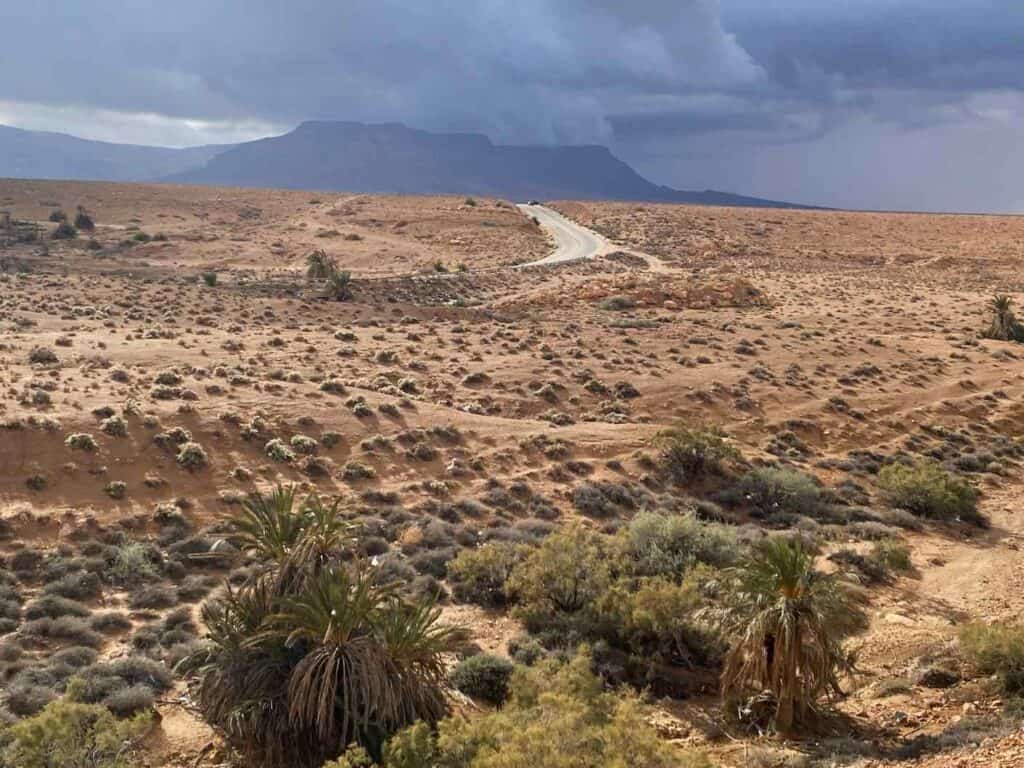
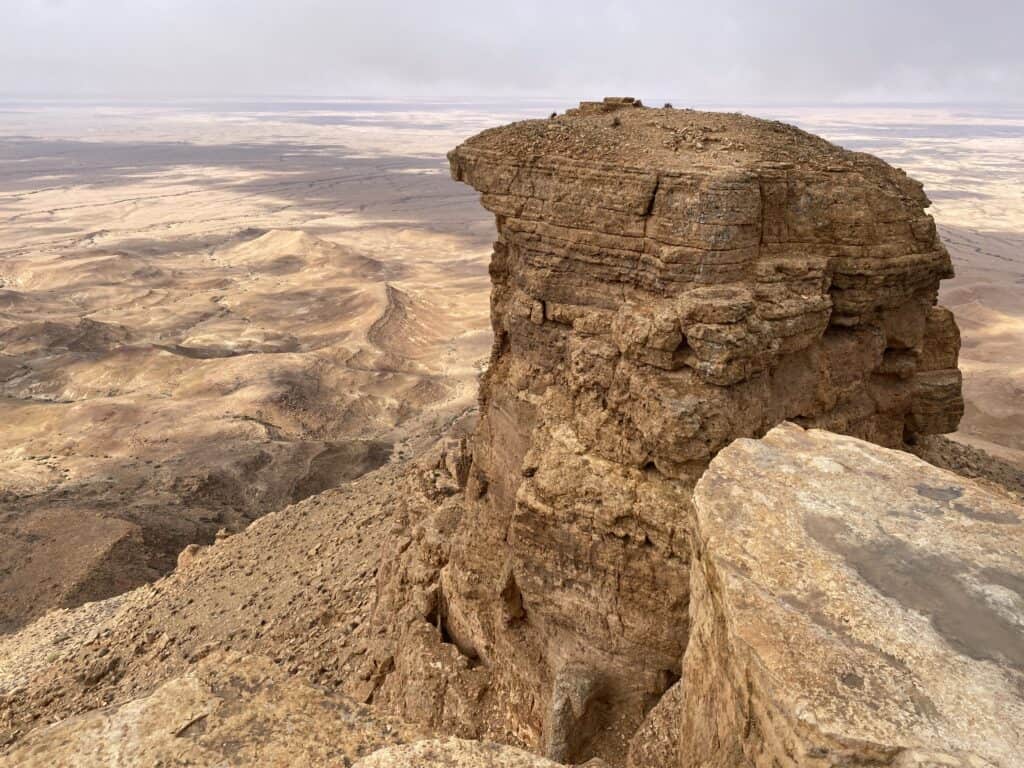
90% of the country is covered by the Saharan desert dotted with picturesque oases. At the same time, the flat coastal trip where most people live in bigger cities such as Tripoli, Misrata, or Benghazi is the center of agriculture. The country is mainly flat except for the Nafusa plateau south of Tripoli, which dominates the northwest of the country, the Green Mountains (Jebel Akhdar) in eastern Libya, the most fertile and lush region, and the Tibetsi mountains in the south. That spreads over to Chad.
Regions of Libya
The Greeks named their three cities along the coast (Sabratha, Oea, present-day Tripoli, and Leptis Magna) Tripolis, which became Tripolitania under the Romans. Libya was not a united entity until the Italian occupation. Before that, three distinct regions (Tripolitania, Cyrenaica, and the Fezzan) were separated from one another by vast tracts of desert. The Gulf of Sirt marked the divide between Tripolitana and Cyrenaica and the western Arab world (Maghreb) and the eastern Arab world (Masriq). It means that Tripolitana is closer to Tunisia in culture, while Cyrenaica, named after Cyrene, the first Greek settlement in the area, has always had closer links to Egypt. Cyrenaica’s identity was further bound to the Sanusi, the Sufi movement that governed the East until the Italian Fascists came. The East had even enjoyed a period of self-governance under King Idris’s monarchy from 1951 to 1969. Most of the inhabitants of Cyrenaica’s hinterland remained Bedouin pastoralists until the second half of the twentieth century. Each region retained its separate identity until the 1960s. These regions have different histories and cultures, and people speak various dialects.
The southern Fezzan region was mainly desert people who traded between the oases. Its main connections were with sub-Saharan Africa and the Mediterranean coast. Their lifestyle made them really resourceful against hardship.
What you should know before traveling to Tunisia + itinerary
The Libyan Flag
As of 1977, the Libyan flag was just one color—green—symbolizing devotion to Islam. However, it could also refer to Gaddafi’s Green Book, which detailed his political aims, including transforming Libya into a wealthy, green agricultural nation.
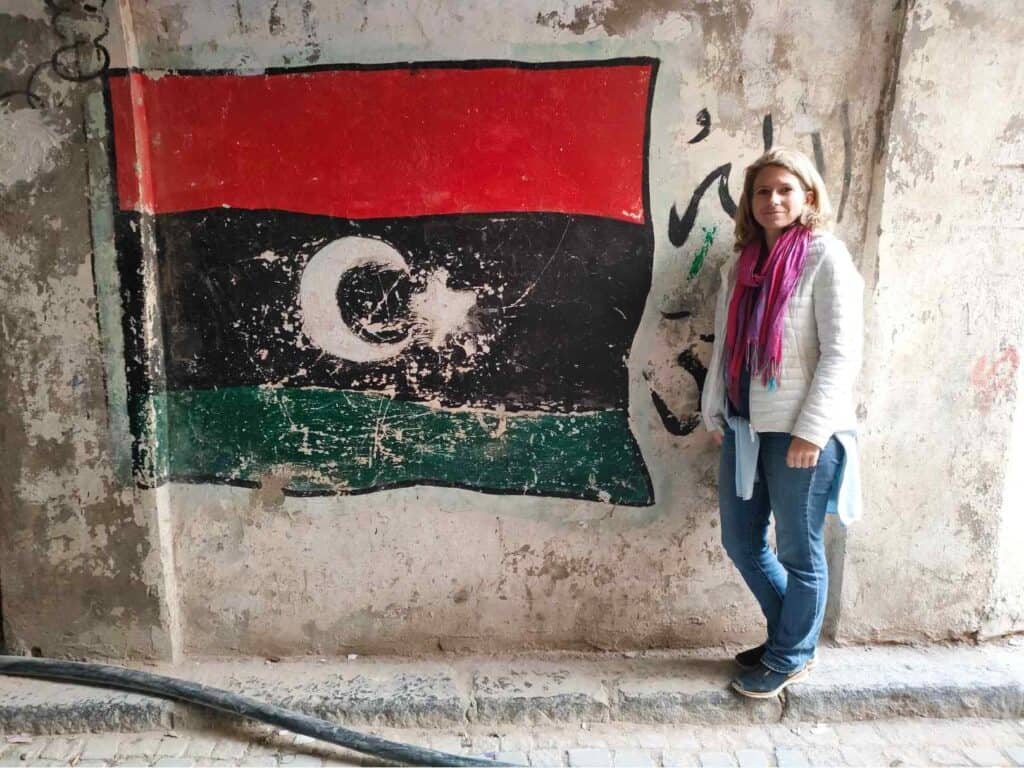
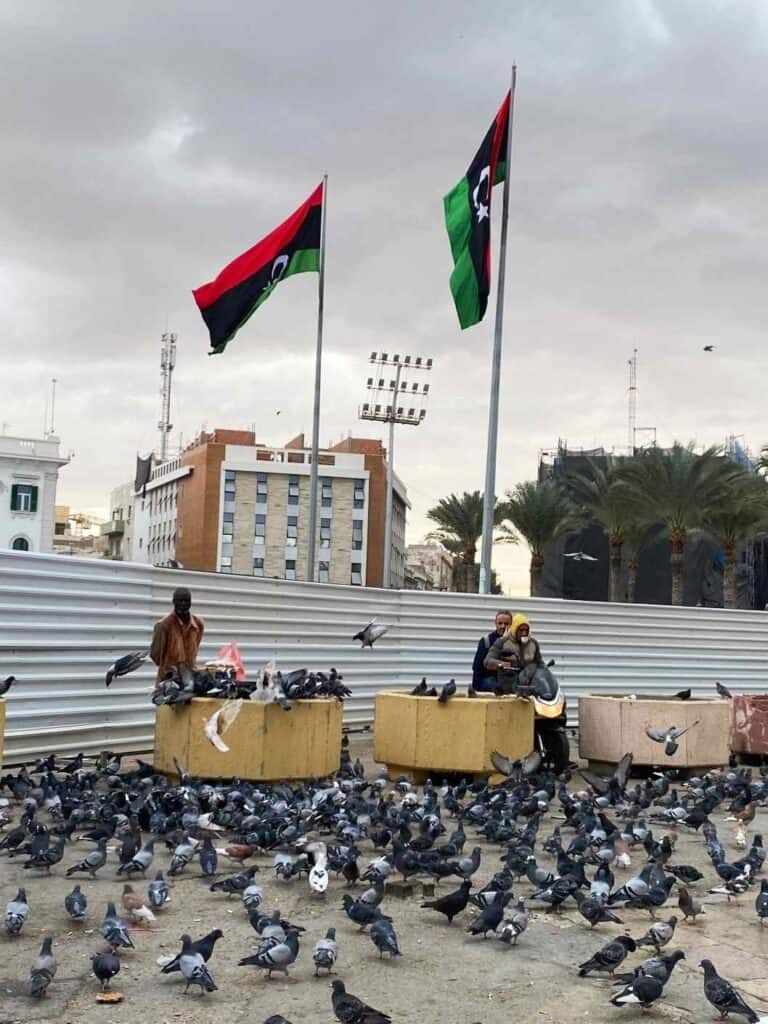
Language
The official language is Arabic, with three main dialects: Tripolitanian, Southern Libyan, and Eastern Libyan.
Various Berber languages are also spoken (Tamahaq, Ghadames, Nafusi, Zuwara, Yefren, Fezzan, Kufra, or Awjilah). Gaddafi didn’t recognize the existence of the Berbers as a separate ethnicity. They had to hide their identity; the Berber language was not taught in schools, and for years, it was forbidden to give Berber names in Libya. With the fall of Gaddafi, the colorful Amazigh (Berber) flag appears again, and children can learn it in school as well.
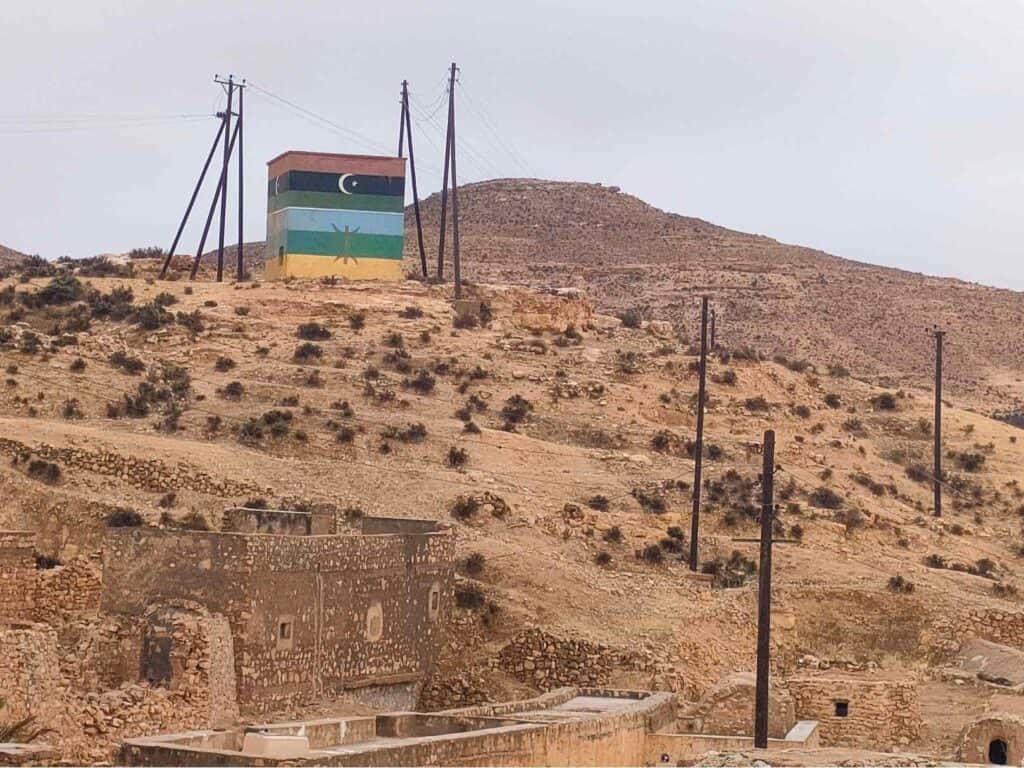
You may expect that many people speak Italian due to the colonial past; however, the truth is that even the older generation doesn’t speak that any longer. Since the civil war of 2011, thanks to the French help received, French has also gained popularity.
Religion
97% of the population are Sunni Muslims. Pre-Islamic Berber rituals and beliefs have mingled with orthodox Islam like in other North African countries. The eastern part of Libya (Cyrenaica) is also closely associated with the “Sanusi” Sufi movement.
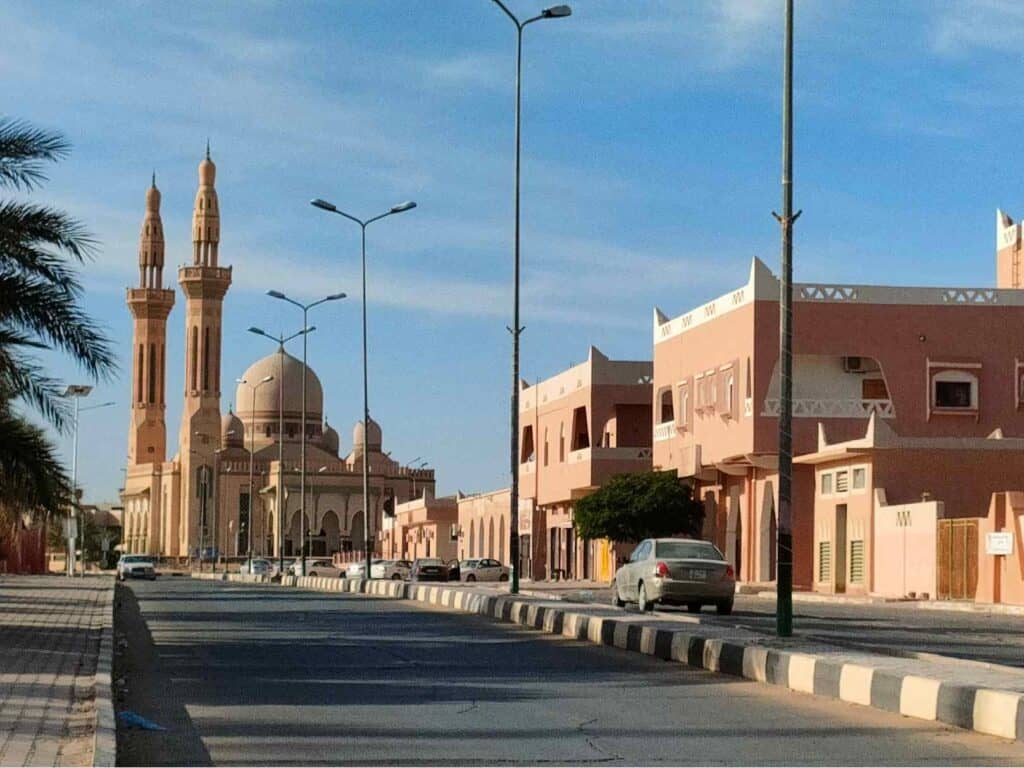
The religious order managed to attain relatively large autonomy from the Ottoman government and ruled the eastern region until the arrival of the Italian fascists. It significantly lost power when the Italians systematically closed its religious schools and centers in the 1930s. Idris of Libya, the first king of the United Kingdom of Libya after the Italian occupation, was the grandson of the founder of the Senussi movement.
Apart from that, there are Christians in Libya, mainly Coptic Orthodox. Libya also had one of the oldest Jewish communities, dating to the 4th century BC, but there are no longer any Jews living in Libya.
According to the Libyan Constitution, Islam is the state religion, and Sharia is the principal source of legislation.
Ethnicity
Most Libyans are Arabs or Arab Berbers, as most indigenous Berbers intermarried with Arabs. However, Berbers still maintain their cultural identity in various parts of the country, particularly in the Jebel Nafusa mountains and the desert oasis town of Ghadames. Bebers often refer to themselves as Imazighen (free men).
During Gaddafi’s time, Berbers were not acknowledged as a separate ethnic group, but this has changed since 2011. The Tuareg and Tebu ethnic groups (a sub-group of Berbers) live in Libya’s Libyan southern regions.
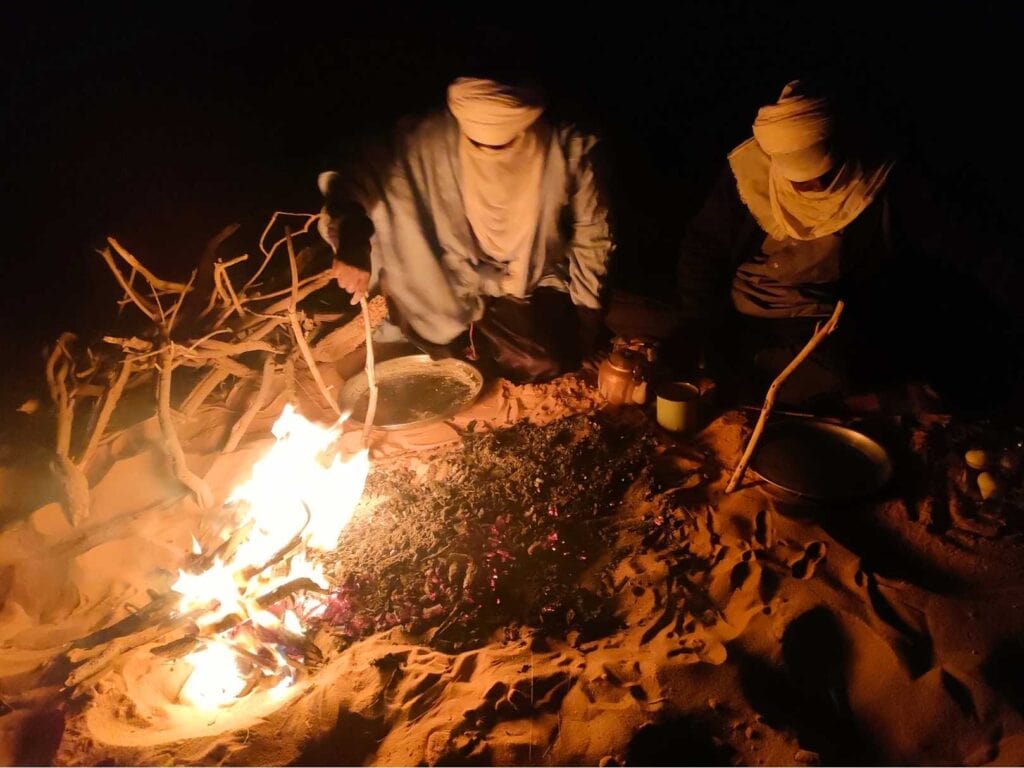
The Tuareg are initially nomad Berber people who lived across the Sahara and the Sahel in southern Libya, part of Algeria, Mali, Niger, and Burkina Faso. In some parts, they are also called the “Blue men of the desert” due to the indigo-colored veil with which they cover their faces. Interestingly, they live in a maternal society where women remain unveiled.
The Tebu people are another ethnic group found in southern Libya around the oasis town of Sabha, Kufra, Muzruq, and Qatrun in the Tibesti mountains as well as in Chad and Niger. They are also called the “Black nomads of the Sahara.” Gaddafi stated that they were Chadians, not Libyans, and deprived them of their Libyan citizenship in 2007. It also meant that they had no access to education and healthcare.
Short History
Today’s Liya was first populated by Berbers, who spoke their languages before the Phoenicians arrived in the first millennium BC. Phoenician traders originating from today’s Lebanon set up trading posts along the North African coast, including Oea (now Tripoli), Leptis Magna, and Sabratha. Carthage, near present-day Tunis, became the dominant sea power in the Western Mediterranean until it was defeated by Rome in the three Punic wars that ended with the destruction of Carthage.
Greek settlers established their first colony, Cyrene, in the 7th century, which later developed into one of the principal intellectual and artistic centers of the Greek world.
Septimus Severus, Roman Emperor, was born in Leptis Magna, which became the second biggest city of the Roman Empire after Rome. With the split of the Roman Empire in 395, Tripolitania (West Libya) was assigned to Rome’s Western Empire, while Cyrenaica (East Libya) became part of the Eastern Empire. From then on, the two parts of the country had a different history and cultural development. This makes it difficult until now to create a united nation.
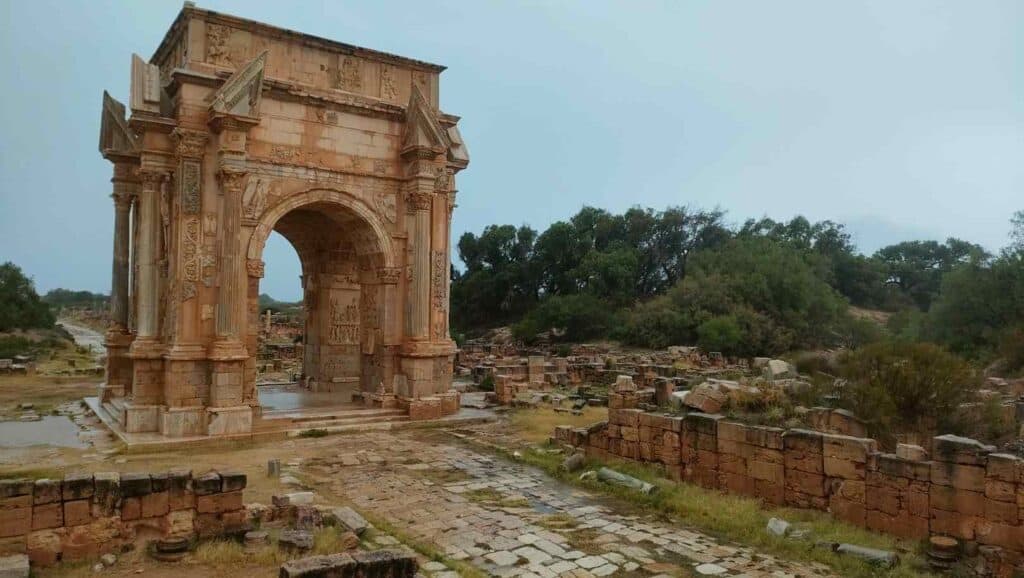
The Arab conquests in the 7th century that entailed the spread of Islam was another crucial event in Libyan history.
During the 16th century, Libya came under Ottoman rule, lasting until the Italian invasion in 1911. Libya was one of the last African territories not occupied by Europeans. Italy envisioned itself establishing the modern version of the Roman Empire and set off to create Italian sovereignty over the regions once part of the Empire. Italy was also in need of cheap raw materials and markets for the development of its own economy.
The Italians exploited the weakness of the Ottoman Empire and, through the first air raids in history, gained control of Libya in 1911. It was one of the last African territories not previously occupied by Europeans. After World War I, the victorious Allied powers recognized Italy’s sovereignty over Libya. Still, it was not until two decades later that they were able to unite their North African colony into a single entity, which they named Libya. In 1939, Libya became an integral part of Italy. The Italians modernized the country, their most significant project being the construction of a multi-lane, 1,800 km coastal highway between Tunisia and Egypt. The plan was to have 500,000 Italians in Libya by 1950. It was also a period of oppression and repression, during which hundreds of thousands of people lost their lives.
Omar al-Mukhtar, the Sufi teacher turned guerrilla leader, is a legendary hero of Libyan resistance against the Italian occupation. For nearly two decades, before his capture and execution at the age of seventy-three, he fought the Italians. The last stronghold of the Sanusiya movement fell, and Omar Mukhtar was hanged in front of 20,000 Arabs. “The Lion of the Desert” movie released in 1981 with Anthony Quinn, was financed by Muammar Gaddafi and is about the life of Omar Mukhtar.
The most beautiful places in Libya
At the end of WWII, Italy had to give up its precious colony, and British military administrations were established for Tripolitana and Cyrenaica, while the French controlled the southern Fezzan.
On December 24, 1951, King Idris proclaimed the United Kingdom of Libya. This made Libya the first African state to gain independence from European rule and the first and only state to be established by the United Nations General Assembly. Despite its independence, however, it lacked a national identity. It was one of the poorest countries in the world, with a population of about 1 million, a 40% infant mortality rate, and 94% illiteracy. It is also surprising that it survived for 18 years at all.
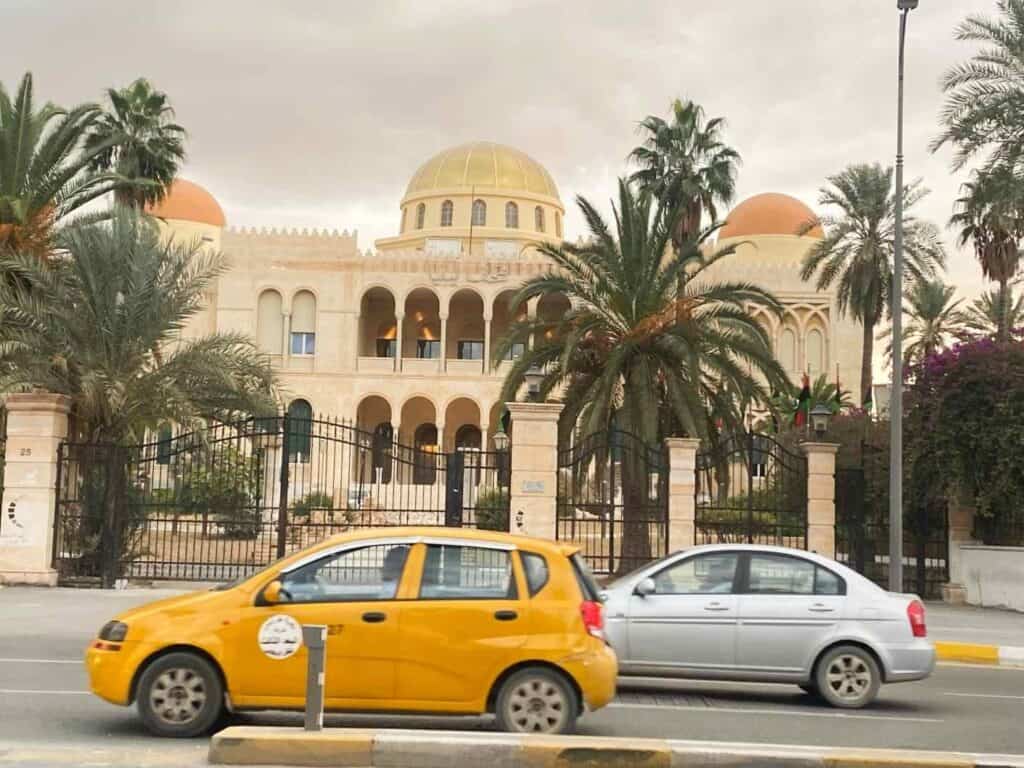
The discovery of oil in the 1950s changed Libya forever. It became the world’s 4th largest oil producer, and the oil sector grew at an unknown rate.
Then, on September 1, 1969, a group of young military officers overthrew King Idris in a bloodless coup. Its leader was an unknown 27-year-old commander, Muammar Gaddafi. The king never returned to Libya, dying in Cairo in 1983.
Gaddafi wanted to carry out a coup in 1969 and create socio-economic and political transformation, a new socialist society that did not need a government. In the 1970s, he began popularizing his “Third Universal Theory,” an alternative ideology to capitalism and communism. In 1976, he disappeared into the desert to formulate his political theories in the “Green Book.” Gaddafi advocated statelessness, where people would manage their affairs without state institutions. In 1977, Gaddafi renamed the country. It then became the Libyan People’s Arab Socialist Jamahiriya. Private property and private trade were abolished, and all supermarkets were state-owned.
Gaddafi saw himself as the leader of Africa and adopted the title “King of Kings”. He supported African liberation movements and sent arms to various rebels around the world. But Libya was permanently stigmatized by its association with international terrorism. By the 1990s, the country was at a low point under an international embargo, with unemployment rising, inflation reaching 50 percent, and Libyans facing basic food shortages.
Libya slowly took a new direction, and Gaddafi adopted a more peaceful tone and emerged from isolation. In 2003, the United Nations lifted its sanctions, followed by the United States. 2006 after thirty years of hostility, America and Libya restored full diplomatic relations.
The Arab Spring that started in Tunisia on 18th December 2010 spread to other Arab countries. The events after 2011 led to NATO intervention and the eventual fall of Gaddafi, but the subsequent steps were not well planned. Militias, extremists, and international powers were ripping the country apart, leading to a Libya more fragmented than ever before.
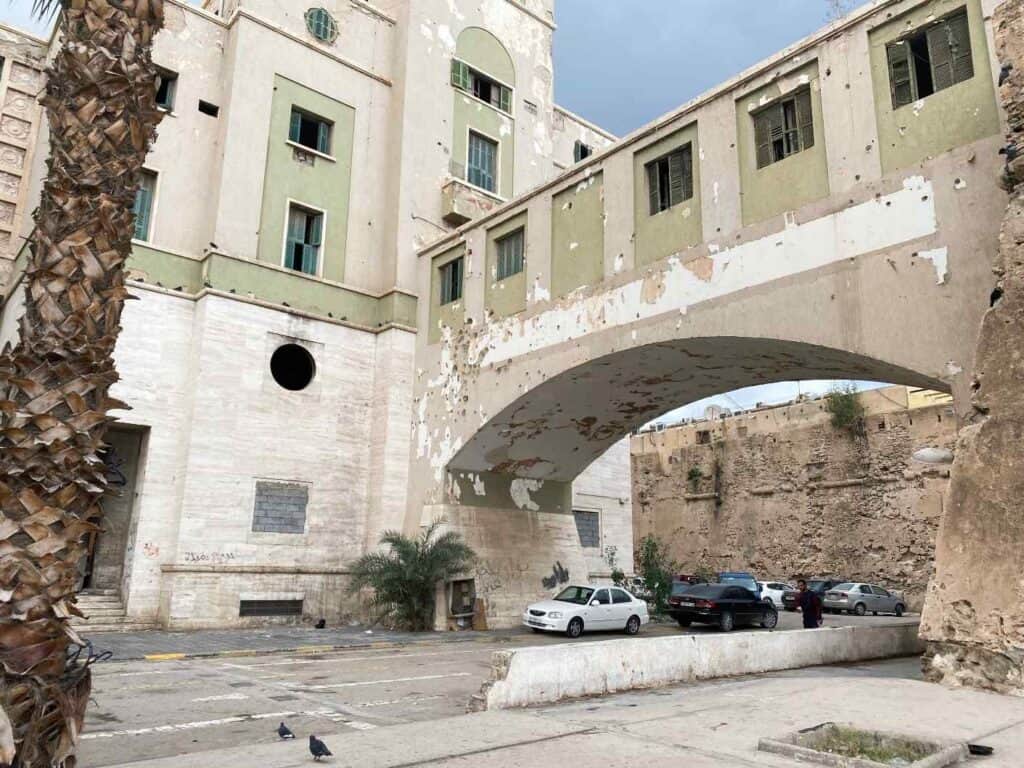
Once Gaddafi was caught and killed, the tribes and militias that united against him, now turned against each other. In 2014, a disputed election plunged Libya into the abyss. Two rival administrations were formed, each claiming they should be considered legitimate. Elections systematically fail, so the democratic transition of Libya has proved so far unsuccessful. What happens in Libya could have an impact on the world as Libya has the largest oil reserves in Africa and is a main stepping stone for migrants seeking a better future in Europe.
Gaddafi was removed, but in many ways, his policies have lived on. About 50% of the people work in the public sector, while private enterprise is severely restricted. Libya has been known as a traditional conservative society where alcohol is still strictly prohibited, and entertainment such as cinema and theatre are non-existent.
The most beautiful places in Libya
Libya is one of the Maghreb, North African countries, but it differs from Morocco, Algeria, and Tunisia. Although we have recently identified it with the bloody civil war following the overthrow of Gaddafi, the country has beautiful natural features in addition to the desert. It is home to thousands of years of historical monuments, which, if they were anywhere else, would be visited by crowds. You can travel to Libya within an organized framework, and it is not difficult to obtain a tourist visa. However, you should inform yourself beforehand about the current situation. Libya was a big surprise for me; it captivated me much more than the much more popular neighboring Tunisia. Libya is a country I would definitely go back to!

